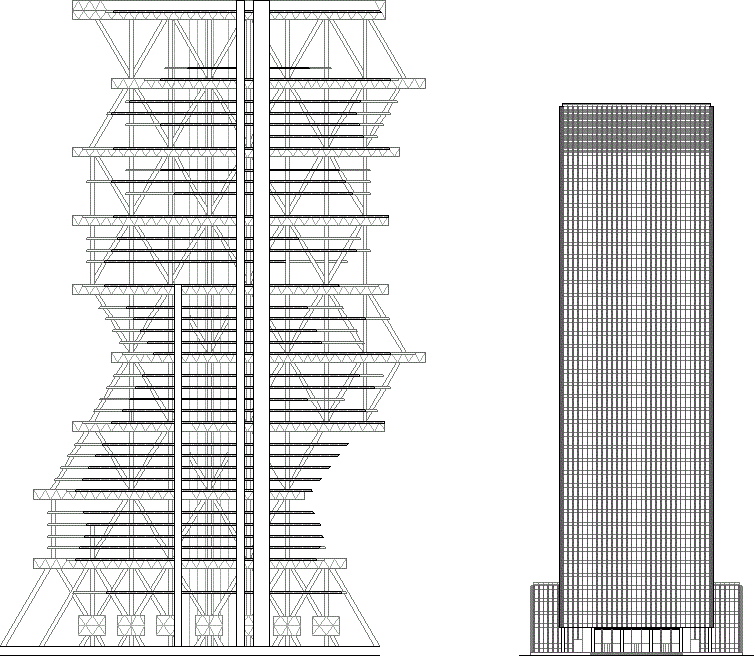2007.10.14 17:52
Negative notes
"In Modern architecture we have operated too long under the restrictions of unbending rectangular forms supposed to have grown out of the technical requirements of the frame and the mass-produced curtain wall. In contrasting Mies' and Johnson's Seagram Building with Kahn's project for an office tower in Philadelphia it can be seen that Mies and Johnson reject all contradictions of diagonal wind-bracing in favor of an expression of a rectilinear frame. Kahn once said that the Seagram Building was like a beautiful lady with hidden corsets. Kahn, in contrast, expresses the wind-bracing--but at an expense of such vertical elements as the elevator and, indeed of the spaces for people."
--Robert Venturi, Complexity and Contradiction in Architecture (New York, MoMA, 1966), p. 56.
"Yet in City Tower, Kahn no more succeeded in making strides in architectural structure than he had in the Art Gallery at Yale. He erroneously discussed the project in tectonic terms, justifying City Tower's form by arguing that it best expressed buttressing against wind stresses: "The mind envisions a construction of a building growing from a base crossing its members as it rises against the forces of the wind." Yet neither Tyng nor Kahn checked their wind-stress argument with a structural engineer, who would have told them that because of the forces of gravity, a tower rising in a more-or-less straight vertical is dramatically more efficient."
--Sarah Williams Goldhagen, Louis Kahn's Situated Modernism (New Haven, Yale University Press, 2001), p. 78.
| |

|